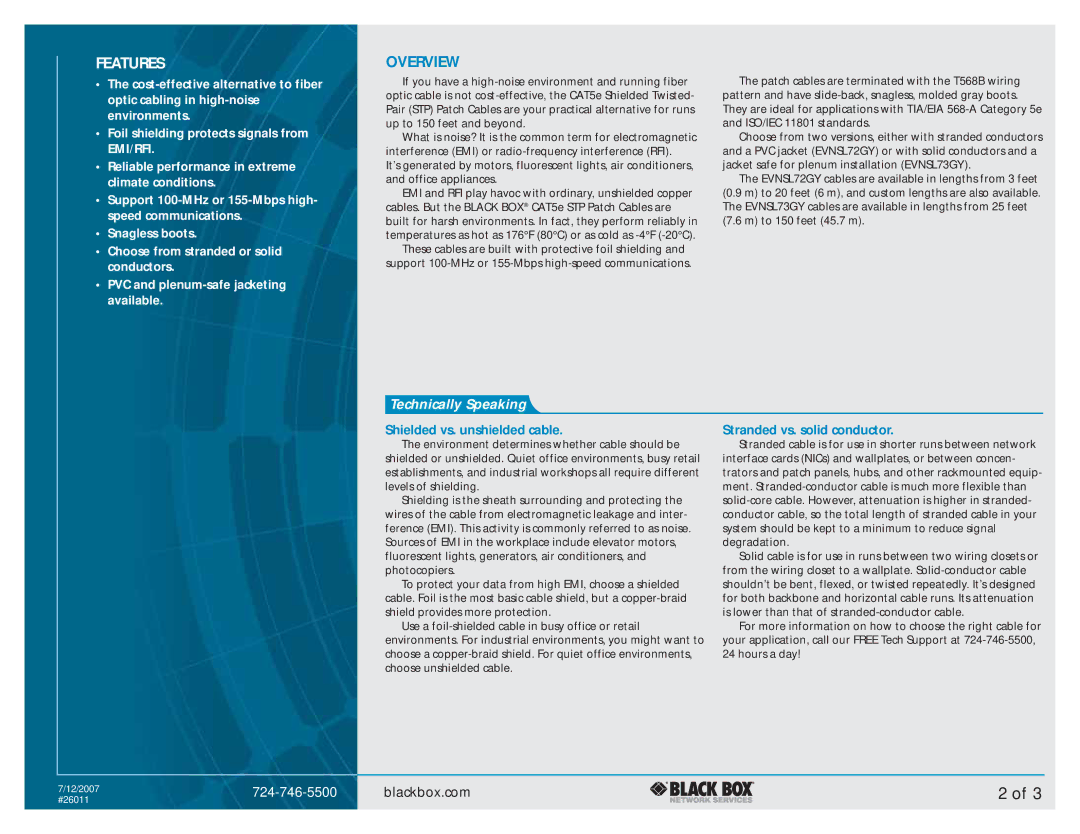
FEATURES
•The
•Foil shielding protects signals from EMI/RFI.
•Reliable performance in extreme climate conditions.
•Support
•Snagless boots.
•Choose from stranded or solid conductors.
•PVC and
OVERVIEW
If you have a
What is noise? It is the common term for electromagnetic interference (EMI) or
It’s generated by motors, fluorescent lights, air conditioners, and office appliances.
EMI and RFI play havoc with ordinary, unshielded copper cables. But the BLACK BOX® CAT5e STP Patch Cables are built for harsh environments. In fact, they perform reliably in temperatures as hot as 176°F (80°C) or as cold as
These cables are built with protective foil shielding and support
The patch cables are terminated with the T568B wiring pattern and have
Choose from two versions, either with stranded conductors and a PVC jacket (EVNSL72GY) or with solid conductors and a jacket safe for plenum installation (EVNSL73GY).
The EVNSL72GY cables are available in lengths from 3 feet (0.9 m) to 20 feet (6 m), and custom lengths are also available. The EVNSL73GY cables are available in lengths from 25 feet (7.6 m) to 150 feet (45.7 m).
Technically Speaking
Shielded vs. unshielded cable.
The environment determines whether cable should be shielded or unshielded. Quiet office environments, busy retail establishments, and industrial workshops all require different levels of shielding.
Shielding is the sheath surrounding and protecting the wires of the cable from electromagnetic leakage and inter- ference (EMI). This activity is commonly referred to as noise. Sources of EMI in the workplace include elevator motors, fluorescent lights, generators, air conditioners, and photocopiers.
To protect your data from high EMI, choose a shielded cable. Foil is the most basic cable shield, but a
Use a
Stranded vs. solid conductor.
Stranded cable is for use in shorter runs between network interface cards (NICs) and wallplates, or between concen- trators and patch panels, hubs, and other rackmounted equip- ment.
Solid cable is for use in runs between two wiring closets or from the wiring closet to a wallplate.
For more information on how to choose the right cable for your application, call our FREE Tech Support at
7/12/2007 | blackbox.com | ||
#26011 | |||
|
|
2 of 3
